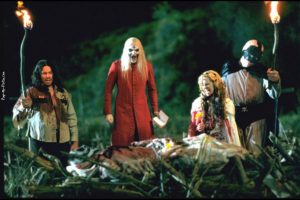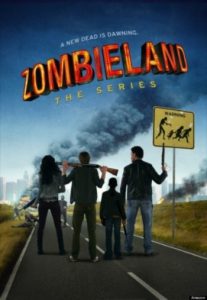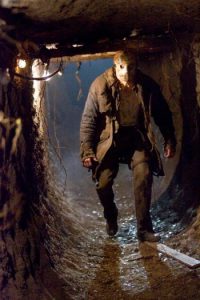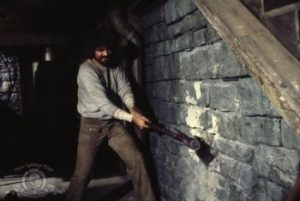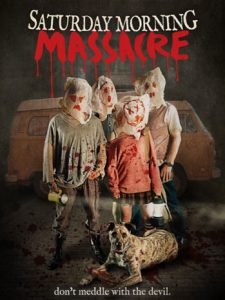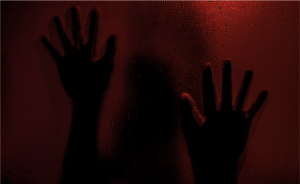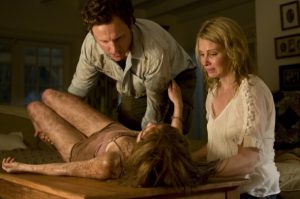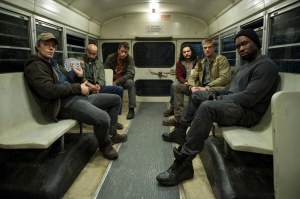7 Underrated Apocalypse Movies
Most horror fans love a good apocalypse. I know I sure do. Night of the Living Dead, Invasion of the Body Snatchers, and 28 Days Later are practically my bread and butter, and I bet you feel the same way. But what does a horror fan do when you’ve already marathoned through all of Romero’s Dead films for the seventeenth time this week? Turn to an underrated doomsday classic, of course!
Not all of these films are horror per se, but you don’t necessarily need ghouls, goblins, and zombies to make a film scary. Desolate landscapes and desecrated humanity prove more than terrifying enough. And like the diverse group of survivors that always seems to join up in apocalypse movies, these seven titles are equally disparate, ranging from two should-be classics to several no-budget cult favorites.
So start stockpiling clean water and toilet paper. Things are about to go Armageddon (as in end of the world, not that awful Bruce Willis movie) with these 7 underrated apocalypse films.
Creepozoids
Mostly forgotten in the annals of B-movies (and often lambasted by those who do remember it), this 1987 sci-fi-horror hybrid does its best to imitate Aliens, but ultimately succeeds at being something else entirely. In an effort to escape persistent acid rainstorms, a proverbial group of survivors, including the ever-nubile Linnea Quigley, hole up in a derelict government research facility. Unfortunately, the place used to perform that well-known government specialty: heinous experiments that abominate against nature. Now vicious rats and a giant monster are on the loose, eager to do a meet and greet with the hapless survivors.
The effects are all-out 80s cheese, and the set-up and performances could use some fine-tuning, but not every horror movie needs to act, look, and feel like it was directed by Kubrick or Polanski. Sometimes, a good old-fashioned low-budget thrill is more entertaining than an inveterate classic anyhow. And if you’re still not convinced, did I mention the film stars Linnea Quigley in all her 1980s glory? That alone should inspire you to sift through that dusty stack of VHS tapes at your parents’ house. Creepozoids is worth the doomsday-loving trouble.
On the Beach
Back when the Cold War was at its iciest, everyone assumed the end was near. We just hoped it would be quick and painless. On the Beach, based on a 1957 novel, takes another approach and postulates that once the bombs go off, mankind will get a little extra time to contemplate its fate as the fallout spreads gradually across the globe, killing everyone in its wake.
Although not conventional horror in any sense, the film does feature Anthony Perkins, just one year prior to his debut as Norman Bates, so that should serve as some consolation. The stellar cast also includes Gregory Peck, Ava Gardner, and Fred Astaire, which make the exclusion of this 1959 film from the modern consciousness all the more noteworthy. It has every element necessary to achieve classic status yet rarely receives the accolades it deserves.
Maybe that’s because with no rabid zombies or on-screen battles, the story is instead about finding dignity in the face of death. There are no sweeping overtures toward perseverance or ragtag bands of survivors. Instead, On the Beach reveals the decrescendo of humanity as we arrive at a slow yet inevitable last stop. And for a movie all about poise, that ending sure does kick you while you’re down.
Quintet
Directed by Robert Altman and starring Paul Newman, Quintet, like On the Beach, should have been a shoe-in to become a conventional classic. But its bleaker than bleak tone kept mainstream audiences at bay and renders the film mostly lost on today’s audiences. What a shame too because if you’ve got the resolve to endure the hopelessness, it’s one of the most artistically rendered apocalypses ever committed to film.
Produced before global warming theories were the norm, Quintet reveals a futuristic world in which Earth has been plunged into a new ice age. The paltry survivors subsist in a frozen purgatory and play the titular game which dictates if you lose while playing, you must then be killed in real-life too. Strange, but honestly, what else have you got to do post-apocalypse than engage in a violently outlandish competition that uses knickknacks and dice? Chances are your schedule isn’t full of, you know, stuff.
Paul Newman, of course, gets swept up into the mess, and whether he wins the game of Quintet or not, viewers have a suspicion that he’ll still lose out in the end. After all, it’s already the end.
Night of the Comet
Since its release, this 1984 doomsday comedy has developed a pretty hearty cult following, so maybe it’s not so underrated after all. But on the surface, Night of the Comet doesn’t look like a celebrated cataclysmic romp. How exactly do you market a movie with two strong female leads—a cinematic rarity even thirty years later—and a plot that incorporates zombies, government corruption, and piles of red dust that used to be humans? Well, you could just let the film use its bombastic style and inherent charm to prove that the end of the world doesn’t have to be the end of fun. And stars Catherine Mary Stewart and Kelli Maroney certainly have a good time toting firearms to combat the bad guys and crashing the mall to find new threads. Even if it does have a large number of devotees, any apocalypse movie that features a shopping montage and gun-savvy girls deserves more adulation.
Kairo (Pulse)
While apocalypses most commonly arrive in the form of meteorological anomalies or virulent pestilence, Kairo’s annihilation comes from within. Cyber ghosts use the internet to entice the living to join them, and only swathes of red tape can keep them from succeeding. It’s far cooler than it sounds.
Though Kairo is well known to fans of J-Horror, the severely inadequate remake—complete with a wide-eyed Veronica Mars—has superseded the original Pulse in the minds of mainstream American audiences. And that’s if they remember either film at all. Our ever-increasing reliance on technology makes us resistant to the idea that it could be our undoing. Kairo tackles this possibility without flinching and explores our self-imposed isolation in a discordant world as a poignant metaphor for subsisting without actually living. And in case you didn’t guess, it doesn’t end well for humanity. If the ghosts don’t drive you to suicide, then you’ll just disintegrate away into ash, every bit as ephemeral as the very circuits that destroy you.
The World, The Flesh, and The Devil
With an esoteric title that has no relationship to literal demons but instead refers to spiritual ones, this 1959 doomsday drama is perhaps the greatest wild card of the bunch. The story goes that apocalypse has struck, and Inger Stevens, who back then, vied with Jean Seberg for the title of Saddest Blonde Beauty, is the only woman left on Earth. Mel Ferrer—best remembered (at least by me) as Audrey Hepburn’s first of two lemon husbands—and Harry Belafonte—best known to many horror fans as that guy who sounds an awful lot like Lydia Deetz doing Karaoke—star as the only two men left on Earth. Bet you can see where this is going.
Naturally, the two guys start acting like average frat boys on any given Saturday night and begin clamoring for the nearest girl’s affection. Actually, only Audrey’s ex does that. Belafonte’s Ralph Burton still feels bound by the social expectations and racial inequality of the times. What follows is an exploration of who we are when all the rules of society have been stripped away. Some of us are good, some are bad, but not even widespread calamity can deny our true nature.
Eraserhead
Eraserhead isn’t so much underrated as it is underappreciated for the doomsday movie that it is. Okay, you’re right—this one might not be apocalyptic at all. Thematically, the films of David Lynch manage to be the most mercurial of anything in cinema.
But with the vacant landscapes and sparse population, my bet’s always been on the apocalypse theory to explain away the zany frolics of Henry Spencer, his sad sack wife, and barely human baby. With a set-up like that, it could just be a funny little sitcom, but unless you’ve got unusual tastes, there’s not much uproarious about Lynch’s inaugural filmmaking effort. Alright, maybe the unusual song and dance sequence that I’ll dub the Girl in the Radiator Stomp, but that’s about it. Everything else emits a kind of deadly seriousness that revels in the displacement and loneliness of human beings. Sounding end of the world yet? Throw in an infant whose mother laments, “They’re still not sure it is a baby!” and you’ve got a film that illustrates mankind unraveling at the very seams of our essence. If families and technology and urban sprawl define us, what’s left when all that dissipates?
Mostly for kicks, I recently took a straight-laced friend of mine to see the movie on a big screen. When the end titles flashed and the lights in the theater came up, he screamed, “What the f*** did we just see?” Post-apocalyptic doom at its most impenetrable, that’s what. And you’re not likely to forget it anytime soon.
What’s your favorite underrated apocalypse movie? Let me know in the comments below!




![Best Indie Horror Films [ Part 2 ]](https://www.horror-movies.ca/wp-content/uploads/2021/04/absentia-610x343-2-300x169.jpg)
